欧博百家乐Online Maths Teaching
Resources for Communicating
The resources I am currently using are marked with a 💗
Content Creation Video Conferencing Platform 1 to 1 tuition Class of 30 CommentsBitpaper
⭐⭐⭐⭐⭐
💗 $8 pm $20 pm Work and communicate in real-time. Share anything on your screen with one click; websites, apps, videos and more. Bitpaper delivers everything you need to work together effectively online and I like it very much. It couldn't be simpler to set up, no downloading required, it works completely online. It is exceptionally good if you have a stylus to write on the virtual paper but if you are not a fan of your own handwriting there is a very effective typing option too.
Google Meet
⭐⭐⭐⭐ Free Free It is said to be the easiest and most robust of the current platforms for video conferencing and sharing. For me personally the previous version, Hangouts, was so easy to set up and use and it was my favourite. No software installations required as the video and controls are all in the browser. Now it has become Meet I haven't been able to use as a tutor with students who only have a school Google account. Very annoying.
Microsoft Teams
⭐⭐⭐⭐ Office 365 rqd Part of the Office 365 subscription. I really like the ability to allow pupils to use their mouse to work on the shared screen. You’ll need a Microsoft account, or associate your email address with Microsoft to join.
Skype
⭐⭐⭐⭐ Free Free The big advantage is that being the most popular video calling service it is likely to be familiar to pupils.
GoTo Meeting
⭐⭐⭐⭐ £69 pa £134 pa It is the choice of many business people due to its multi-user flexibility. I have used it frequently and found it to be very reliable but the screen sharing is not as smooth as it could be.
Zoom
⭐⭐⭐⭐⭐
💗 Free Free Host up to 100 participants but limited to 40 minutes on the free plan. Teachers have has great success with it and like the facility to mute all participants then Unmute one participant at a time to provide undivided attention. As with other platforms the ability to record lessons means nobody misses out. I like all the features and it has now become my video platform of choice.
Appear.in
Free n/a Said to be really simple to set up and use I haven't yet tried this platform.
Jami
Free n/a An open source platform that offers messaging, video and audio. I haven't yet tried this platform.
More options reviewed by Process St and Larry Ferlazzo and Richard Byrne.
Avoid using Facebook, Instagram and other similar social networks as your online learning platform due to the distractions and temptations to be 'off task' lurking within.
There is no need to have your kitchen as your background when teaching remotely, here are some backgrounds you might find useful (to cover up last night's washing up!)
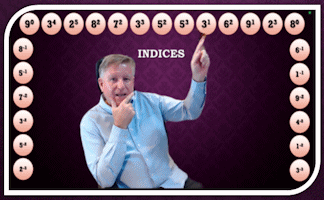
Remote Teaching Video Backgrounds Video Mixing
My latest "must have" is ManyCam. I think it is absolutely brilliant. If you can imagine the control room at a big TV studio where the have numerous screens showing different view of the studio and they can easily switch from one to another… well Manycam provides that on your computer. There isn’t space in this Newsletter to explain benefits you probably haven’t thought of yet but I’d love to make a video showing just how much better my online teaching is now.
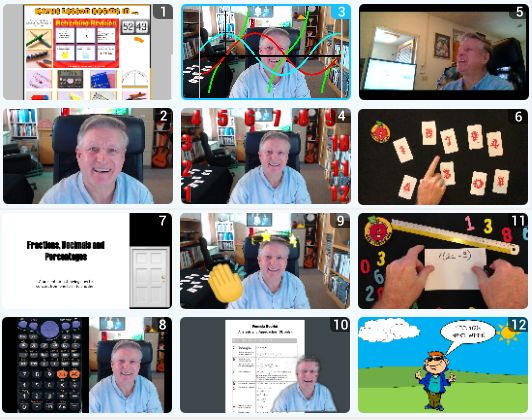
When ManyCam is launched you can create many 'presets' that you can smoothly transition between during your lesson. Here are some examples of presets I've been using recently.
The lesson Countdown Timer (available in Class Admin, Lesson Plans).
The default view of me!
Trig graphs as an overlay so that I can point at features from behind.
The numbers 1-12 I can point to for time table facts recall practice.
A side view for close up of visual aids.
My iPhone clamped over my desk to act as a visualiser.
A PowerPoint presentation cued up and ready to go.
Large view of calculator buttons I can draw on with the built in drawing tools.
A silly congratulations animation to celebrate achievement.
A pdf version of the IB formula book I can scroll through and write on while still being in the picture.
A YouTube video cued up and ready to go.
A 'goodbye' screen to end the lesson.
EmailYour pupils are almost certain to have email accounts, probably provided by your school.
Keep emails concise, containing links to activities and online documents so that you can avoid attachments.
Remind everyone to check their spam/junk folders regularly so that they do not miss important information.
If sending an email to a large number of pupils and parents use the BCC field so that you are not compromising personal data (see GDPR guidelines).
Acknowledge emails received from pupils and parents even if an answer is not required. This 'digital handshaking' lets the initial sender know that their message has got through to you and has not been lost in cyberspace!
Sometimes email is not good enough for communication a particular concept (constructing a perpendicular bisector for example) so suggest a videoconferencing call - but keep parents in the loop.
HandwritingIf you need pupils to see your handwriting as you teach and you don't have access to the interactive whiteboard in your classroom, there are three practical options. I will list them here in increasing order of effectiveness:
Real whiteboard or flip chart.Pictured here is a small, inexpensive whiteboard purchased from the local stationary shop and mounted on a small step ladder. It requires the camera you are using to focus on the board so that pupils get a clear image of your writing.
I have to say that I haven't actually had to use it yet as the digital preferable alternative has always worked. I keep it as a backup though.
You might notice the Indices Eye Test chart on the bottom step. That's a fun way of finding out how well the pupils can see the image captured by your webcam ... assuming they have a decent grasp of exponentials of course!
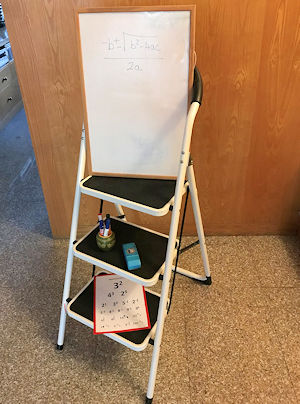
Tablet and Stylus
I have tried using a Wacom Intuos pen and graphics tablet with my computer instead of a mouse. While it certainly makes writing easier it needs a lot of practice to overcome the strangeness of writing on the desk while your eyes are looking at the screen.
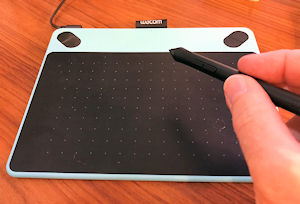
iPad (or similar) 💗
The best results can be obtained with an iPad Pro and Apple Pencil. I have been using Good Notes for content creation and BitPaper for live teaching.
It does take me a certain amount of time to have the resources I will need for the lesson set up in BitPaper but the results are quite pleasing. If the pupil does not have the tools to make handwriting easy I find drag and drop activities are the next best thing.
If handwriting is out of the question then the typing tool in BitPaper is often good enough.
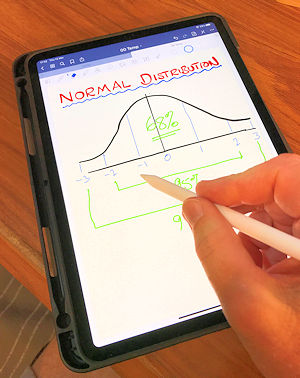
Calculator
I have found that having a calculator emulator on my computer has been really useful as I can share my screen to show the more detailed calculator techniques.
My scientific calculator emulator is a fx-82/85/350ES PLUS 2nd edition. It cost me £11.84 purchased from Casio.com.
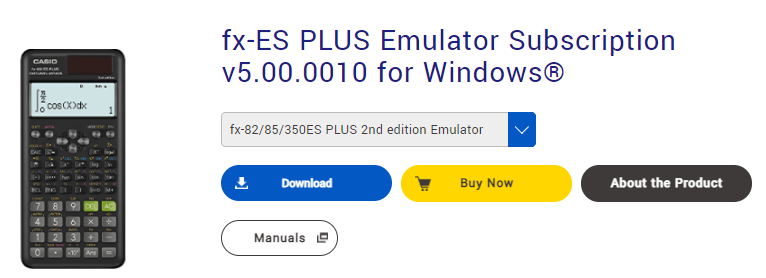
My graphing calculator emulator, the same model that my students will be using in exams, is the TI-Nspire Teacher Software.
Hands Up!It's a bit difficult to ask for "hands up" if everyone's video link isn't visible to you, the teacher. Here's an alternative called the Student Voting System. It allows students to vote or choose a response to a question posed by a teacher. The teacher is then able to immediately see the collated responses from the class.
One to One TuitionHere are some tips for setting up an online tutorial for a pupil using BitPaper and Google Hangouts. Neither of these platforms require the pupil to download anything as they both run nicely in a browser.
Before the session set up a Bitpaper specifically for the pupil you are about to teach. Set up pages for more activities than you will have time for in the tutorial just in case one of the activities does not work. Here are some examples of Bitpaper pages I have used with pupils.
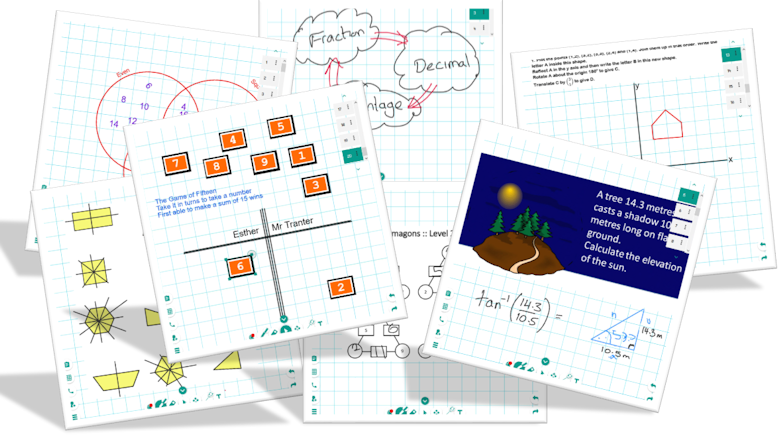
Now you are ready to go. Exactly five minutes before the tutorial session is due to start initiate a Google Hangouts session and send the pupil an email containing the link for the Bitpaper and the Google Hangouts link.
Good afternoon Jimmy,
It's time for our Maths lesson. You will need something to write on, something to write with and your calculator.
Here is the URL of the video link:
https://hangouts.google.com/call/eXaMpleNotreal#45321
Here is the link for the BitPaper:
https://www.bitpaper.io/go/Jimmy/eXaMpleNotreal#45321
Here are other links we may use in the lesson or you could work on if the video connection drops.
https://www.transum.org/Maths/Activity/Numbasics/
https://www.transum.org/Maths/Exercise/Expressions/
See you in five minutes,
Mr T
P.S. Don't forget that for the best experience use a large screen computer (desktop or laptop but not a phone). This is because I will be sharing my desktop documents, some of which will require interaction/manipulation by you. Your device will also need to have a webcam as teachers judge how quickly to go through explanations based on the expressions on the faces and the body language of their students!
Now please excuse me stating the obvious but I've thrown together a checklist of what needs to be done before your online tutorial begins.
Pre-Online Tuition Checklist
Get changed into professional clothing! Check you hair and shave!
Go to the Toilet
Check webcam, speakers and microphone are working and turned on
Get real whiteboard or flipchart ready in case digital version fails
Get flashcards ready if necessary
Launch Google Hangouts in your favourite browser
Launch Bitpaper in a second instance of your favourite browser
Launch your lesson plan in a second instance of your favourite browser
Send the pupil links to lesson (see above)
Put phone on silent mode
Turn lights on so that you well illuminated. Close curtains on windows behind you if there is too much back lighting
Wait to enthusiastically welcome the pupils when they appear online
Let Transum know if anything else should be included on this list
And you are now good to go. Open Bitpaper on the left half of your screen and have the video link on the right side of the screen. Let the learning begin!

1. Kahoot: Kahoot! is a game-based learning platform that creates a competitive and fun learning environment. It allows teachers to create quiz-style games to enhance student engagement and learning. Kahoot! also incorporates AI features like an AI question generator for creating quizzes. Access Kahoot!
2. Pear Deck: Pear Deck is an interactive lesson platform that integrates with existing classroom tools. It is designed to create active, collaborative learning environments, offering features like interactive questions and feedback during lessons. Pear Deck emphasises responsible AI use, focusing on personalized learning experiences. Access Pear Deck
3. Scribble Diffusion: Scribble Diffusion, developed by Replicate, transforms sketches into refined images using AI. It enhances hand-drawn sketches into professional-looking images, suitable for artists and designers. However, it might not be ideal for professional use due to average image quality. Access Scribble Diffusion
4. NearPod: NearPod is an educational technology platform for creating interactive, slide-based lessons. It includes features like interactive videos, real-time feedback, and gamified activities. NearPod offers a large library of content and supports live participation, student-paced learning, and front-of-class teaching. Access NearPod
5. Fetchy: Fetchy is an AI tool designed to assist teachers in various tasks. It offers features for generating lesson plans, managing problem behaviour, providing teaching advice, and producing feedback. It is designed to streamline tasks and boost engagement for educators. Access Fetchy
6. Teach Mate AI: TeachMateAi is a collection of AI-powered tools designed to create custom teaching resources and streamline various aspects of a teacher’s work. It aims to simplify and accelerate administrative tasks, allowing teachers to focus on teaching. Access Teach Mate AI
Elii Chapman, Flagstaff Junior Academy
Wednesday, January 27, 2021
"Oh My Gosh!! ‘Fraction Spinners’ is a fantastic format for an activity in a Zoom session with students!!! Please make more versions of this!"
Do you have any comments? It is always useful to receive feedback and helps make this free resource even more useful for those learning Mathematics anywhere in the world. Click here to enter your comments.